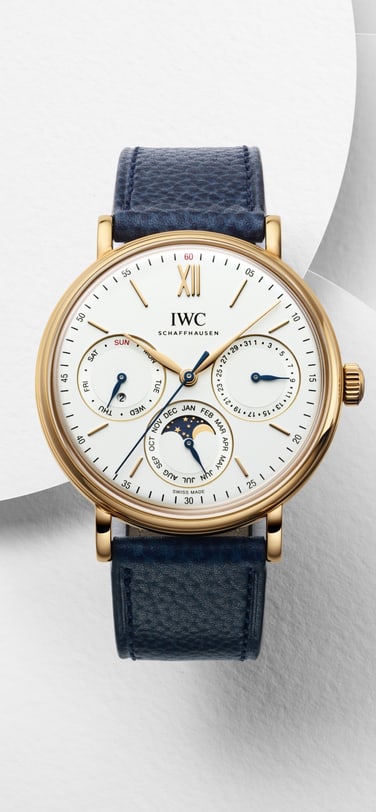IWC HIGHLIGHT
Elegance meets engineering
Fresh, refined and understated, the Portofino Perpetual Calendar combines one of IWC Schaffhausen’s most emblematic complications with the characteristic Portofino design. Featuring a simple round case, Roman numerals and applied hour markers, the Portofino is a classic and elegant wristwatch. Thanks to the purity of its lines, it is exceptionally versatile and can easily be paired with casual and elegant outfits.

The IWC Perpetual Calendar
No complication embodies IWC’s unique engineering approach quite like the perpetual calendar. Developed in the 1980s by Kurt Klaus and consisting of less than 100 ingeniously arranged parts, the calendar is distinguished by its high level of autonomy and user-friendliness. With the Portofino Perpetual Calendar, the iconic complication now returns to the Portofino collection in 18-carat 5N gold and stainless steel – marking the first Portofino Perpetual Calendar in stainless steel.

Compact and versatile
With a case diameter of just 40 millimeters, the Portofino Perpetual Calendar is currently the most compact perpetual calendar watch across IWC’s collections, ensuring perfect wearability for all wrist sizes. Integrated into a movement from the IWC-manufactured 82100 calibre family, the calendar displays the date, month, weekday and moon phase in three subdials at 3, 6, and 9 o’clock. A small indicator informs about whether the current year is a leap year. Another highlight is the perpetual moon phase display, which shows the moon against the backdrop of a star-studded sky.